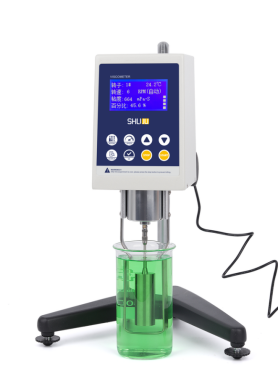Instructions for the trial method of the solder paste viscosity tester for solder paste viscosity testing
What is solder paste
Solder paste, its English name is solder paste. It is a gray mixture paste of non-ferrous metal alloys. It is a paste with a certain viscosity and good thixotropy, which is a mixture of alloy solder powder, emulsified solder paste and some additives. At room temperature, the solder paste can stick electronic components to a predetermined position. When heated to a certain temperature (usually 183 degrees), the volatilization of solvents and some additives and the melting of alloy powder will make the components and PCBs to be welded. The board pads are connected together to form permanently connected solder joints after cooling. Solder paste is a new type of soldering material that emerges with SMT. It is a paste mixture formed by mixing solder powder, flux, and other surfactants and thixotropic agents. Mainly used for the soldering of electronic components such as PCB surface resistance, capacitors, and ICs in the SMT industry. The requirement for solder paste is to have a variety of coating methods, especially good printing performance and reflow soldering performance, and stability during storage.
Viscosity of solder paste (VISCOSITY):
In the work flow of SMT, there is a process of moving, placing or transporting the PCB from printing (or spotting) the solder paste and attaching the components to sending it to the reflow soldering heating process; in this process, in order to ensure The printed (or well-pointed) solder paste does not deform, and the components that have been attached to the PCB solder paste do not shift. Therefore, the solder paste is required to have good viscosity and retention time before the PCB enters the reflow soldering heating.
The viscosity index (ie viscosity) of solder paste is usually expressed in units of "mPa·S"; among them, the solder paste of 200,000-600000mPa·S is more suitable for the needle point injection system or the production process equipment with a higher degree of automation; The printing process requires relatively high viscosity of the solder paste, so the viscosity of the solder paste used in the printing process is generally around 600,000-1200000 mPa·S, which is suitable for manual or mechanical printing.








Please first Loginlater ~